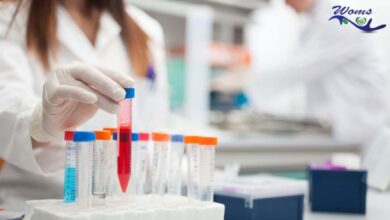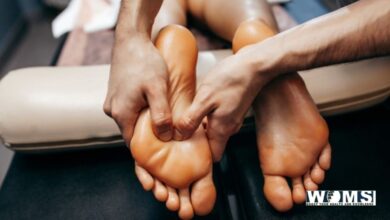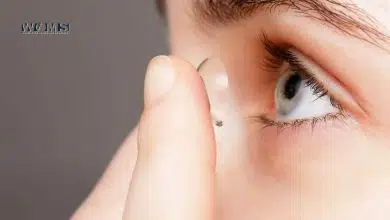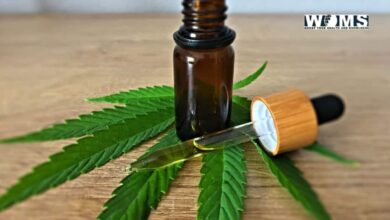What ingredients must be present in our beauty treatment products?

The world of beauty is booming with new techniques and ingredients. With the advancements in technology, there’s a massive market for scientifically-synthesized skincare products. But experts suggest that it’s safer to use natural ingredients to manufacture beauty merchandise. When you buy any sort of solution for your skin, always make sure it doesn’t have any toxic chemical constituents. For example, some companies use triclosan to manufacture soap, mouthwash, and toothpaste. But it disturbs the function of the thyroid gland, causing hormone disruption.
Some companies used to lead and aluminum in beauty products. But these elements damage the human endocrine system. Therefore, it’s better for the customer to always learn about the ingredients mentioned on the product. People use cosmetic products to protect, beautify, and rejuvenate the external appearance of their bodies. The entire beauty industry was worth a gigantic $134 billion a year ago. Hopefully, it will exceed $750 billion by 2025.
Also read - Facts about health and glow
Before learning about your everyday beauty treatment ingredients, let’s have a look at the beauty jargon. The cosmetics industry uses some chemistry-related words. They help us explain and understand the function of some skincare ingredients. Antioxidants prevent the oxidation of molecules. Oxidation causes accelerated aging and eventual death in body cells. Emollients lubricate the skin and keep it hydrated. Humectants hydrate the skin by bringing water molecules to the upper layer of your skin. We will use these terms in our brief discourse below. Now, let’s have a look at some essential ingredients found in the skincare products:
Ingredients
1. DMAE:
It’s an abbreviated form of di-methyl-amino-ethanol. This ingredient is usually present in the brain, but we can get it from salmons and sardines. As a colorless and viscous liquid, it’s a demanded component of beauty treatment products. Humans need acetylcholine for proper brain function. ACh assists nerve cells in sending messages to other cells in the human body. DMAE accelerates the production of this chemical and helps remove wrinkles on the skin, making it necessary for the manufacturers of skincare products nowadays.
2. ALPHA-LIPOIC ACID
This anti-aging agent repairs damaged skin and give you a younger look. It’s soluble in both oil and water, so it has easy access to a cell’s organelles. That’s why its nickname is the “universal antioxidant.” In the human body, the kidney, and the liver naturally produce A-lipoic acid. In the cosmetics industry, it helps diminish pores and flush the human skin. Research suggests it also improves the appearance of facial lines caused by photo-aging.
3. COPPER PEPTIDE
Copper peptide helps regenerate your skin. It is present in human saliva, these peptides have maintained in wound healing and DNA repair. They even come in handy with hair growth and nerve-tissue repair. No wonder the cosmetics industry is fond of this chemical. Studies have confirmed the anti-aging and anti-wrinkle activity of copper peptide GHK-Cu. Moreover, this chemical compound is non-toxic and doesn’t cause skin irritation. Its other function is that of an antioxidant and the production of hyaluronic acid.
4. HYALURONIC ACID
Hyaluronan is also known as the key to the “Fountain of Youth.” The human body naturally produces this beneficial ingredient. Famous for its age-reversal effect, it occurs abundantly in younger skin. But, as a human being gets older, this acid begins to disappear, causing wrinkles to materialize. So, beauty treatment products use it to freshen up dehydrated skin.
5. ALOE VERA
Many skincare products use this Arabian plant as an ingredient. But, to be frank, there’s little evidence to suggest it’s useful in cosmetics. It helps to ward off fungi, viruses, and parasites. People utilize it to cure sunburn, but aloe vera doesn’t promise any sunburn/suntan protection. However, it does help to heal wounds and hydrate dry skin.
6. CHARCOAL
Charcoal is one of many forms of carbon (such as graphite and diamond). It’s known for its absorption properties. When applied to the skin, it’s supposed to suck dirt, germs, and other harmful objects from it. The cosmetics industry marketed the use of charcoal as a beneficial ingredient in beauty products. But there’s little to no evidence to suggest that activated charcoal detoxes your body. Studies in dermatology counseled that using activated charcoal was generally safe. But they also presented the lack of evidence to back its exfoliative or anti-aging effects.
7. VITAMIN C
Not every form of vitamin C is usable in cosmetics. Beauty treatment products use L-ascorbic acid as an ingredient in their merchandise. You can repair damaged skin with the help of this acid. It stops the production of melanin. Melanin is a chemical naturally found in your body and regulates your skin color. Less melanin whitens the skin. It’s also beneficial against skin cancer.
8. GLYCERIN
Glycerin exists naturally in lipids (fats). It’s a humectant but doesn’t have any nutritional value. It can also treat skin dermatitis and inhibits dryness in the skin. It works with emollients to make your skin feel soft, smooth, and flexible. With additional usage as a wound-healing agent, glycerin has also made its way to our everyday soaps.
9. HYDROQUINONE
This one’s a bit controversial in the cosmetics industry. Bleaching creams make its use as a necessary ingredient as people use these creams to heal dark spots on their skin. These spots are the result of an effect called hyperpigmentation. Exposure to the sun causes this effect. In hyperpigmentation, some patches of your skin become darker than the surrounding area. Hydroquinone prevents the production of an excess amount of melanin. Therefore, it inhibits the effect of hyperpigmentation and cures dark spots. Nevertheless, the EU banned more than 1% of its concentration in beauty treatment products.
10. WATER
Water – or what’s chemically known as H20 – is the primary ingredient in all skincare products. Creams, lotions, shampoos, and conditioners use it as a fundamental element. There’s probably no beauty treatment ingredient more natural than this colorless odorless liquid. Skin is quick to absorb water, and it is less likely to clog our pores.
CONCLUSION
The use of cosmetics is as old as civilization. From Egypt to China, people have used different ingredients in their beauty treatment products. The Romans used charcoal as toothpaste. Egyptian women bathed in milk to soften their skin. Historians have revealed how ancient women made lipsticks from primary material to color their lips.
There’s no decline in the popularity of skincare products today. As per a study, an average woman spends some $313 on her external appearance every month. It means that an average woman buys $225,360 worth of cosmetics in her lifetime. It’s natural for human beings to look appealing and attractive. Caution must be maintained when you deal with a potentially harmful material. As said before, always make sure exactly which ingredients you have in your skincare products. Buy the healthiest and the most natural option for your skincare.



